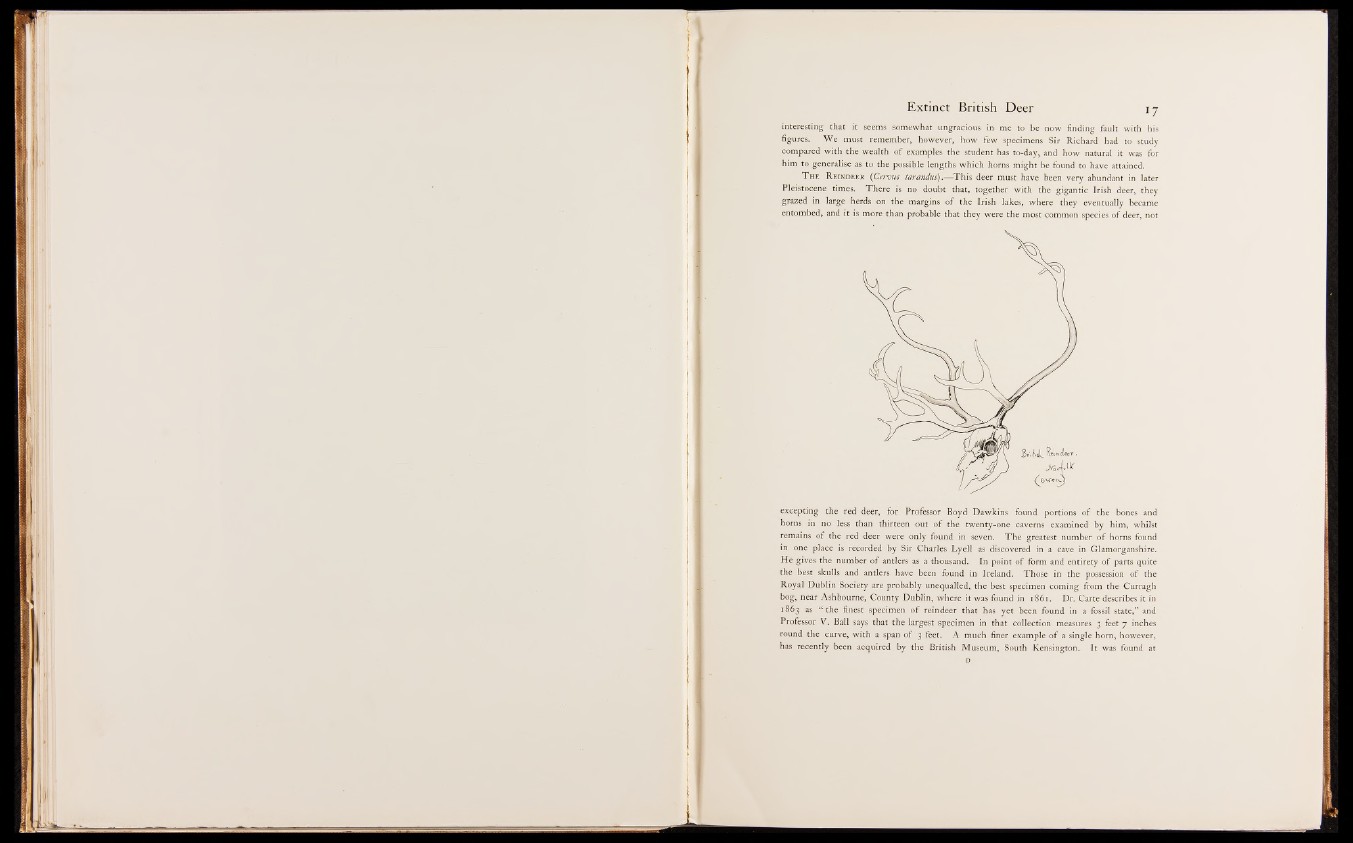
interesting that it seems somewhat ungracious in me to be now finding fault with his
figures. We must remember, however, how few specimens Sir Richard had to study
compared with the wealth o f examples the student has to-day, and how natural it was for
him to generalise as to the possible lengths which horns might be found to have attained.
T h e R e in d e e r (Cervus tarandus) If^This deer must have been very abundant in later
Pleistocene times. There is no doubt that, together with the gigantic Irish deer, they
grazed in large herds on the margins o f the Irish lakes, where they eventually became
entombed, and it is more than probable that they were the most common species o f deer, not
excepting the red deer, for Professor Boyd Dawkins found portions o f the bones and
horns in no less than thirteen out o f the twenty-one caverns examined by him, whilst
remains o f the red deer were only found in seven. T h e greatest number o f horns found
in one place is recorded by Sir Charles Ly ell as discovered in a cave in Glamorganshire.
He gives the number o f antlers as a thousand. In point o f form and entirety o f parts quite
the best skulls and antlers have been found in Ireland. Those in the possession o f the
Royal Dublin Society are probably unequalled, the best specimen coming from the Curragh
bog, near Ashbourne, County Dublin, where it was found in 1861. Dr. Carte describes it in
1863 as “ the finest specimen o f reindeer that has yet been found in a fossil state,” and
Professor V. Ball says that the largest specimen in that collection measures 3 feet 7 inches
round the curve, with a span o f 3 feet. A much finer example o f a single horn, however,
has recently been acquired by the British Museum, South Kensington. It was found at